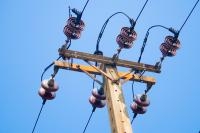
India's manufacturing index dips to 52.8
Blame it on the power shortages cutting manufacturers' production capacity.
According to Nomura, India‟s manufacturing PMI fell further, though only marginally, to 52.8 in August from 52.9 in July. The output sub-index fell sharply (52.7 from 54.7), but was largely offset by a rise in the backlog of work sub-index (51.7 from 47.5).
Here's more from Nomura:
In our view, the fall in the output index and a concurrent rise in backlog of work index were likely due to power shortages which reduced the production capacity of manufacturers.
However, the demand indicators were not bright either. Both the new export orders (49.2 from 49.7) and domestic new orders (54.3 from 54.9) indices fell, which suggests that both external and domestic demand continued to weaken. While inventory of raw materials remained unchanged, finished goods inventory rose in August, which does not augur well for future production.
This demand-side weakness is consistent with last week's GDP report. While real GDP growth rose marginally to 5.5% in Q2 2012 from 5.3% in Q1, private consumption, fixed investments and exports all slowed sharply, suggesting weaker underlying demand. The continued slowdown of demand indicators in the PMI implies that demand, and hence GDP growth, is unlikely to pick up substantially in Q3.
On the price front, while the input price sub-index fell (60.7 from 61.9) the output price index bounced back (59.1 from 57.5). As a result, the ratio of the output price index to the input price index rose to 0.97 in August from 0.93 in July, the highest reading since August 2010, which suggests there has been further improvement in margins and the stickiness of core inflation.
Bottom-line: Weaker demand and persistent supply side constraints indicate that manufacturing activity is likely to remain weak in the coming months. On the inflation front, core inflation is likely to remain sticky and food inflation is likely to rise sharply because of the deficient monsoon season; the combination of these should lift headline inflation in the coming months. Thus, we expect policy rates to remain on hold for the rest of 2012.
























 Advertise
Advertise






